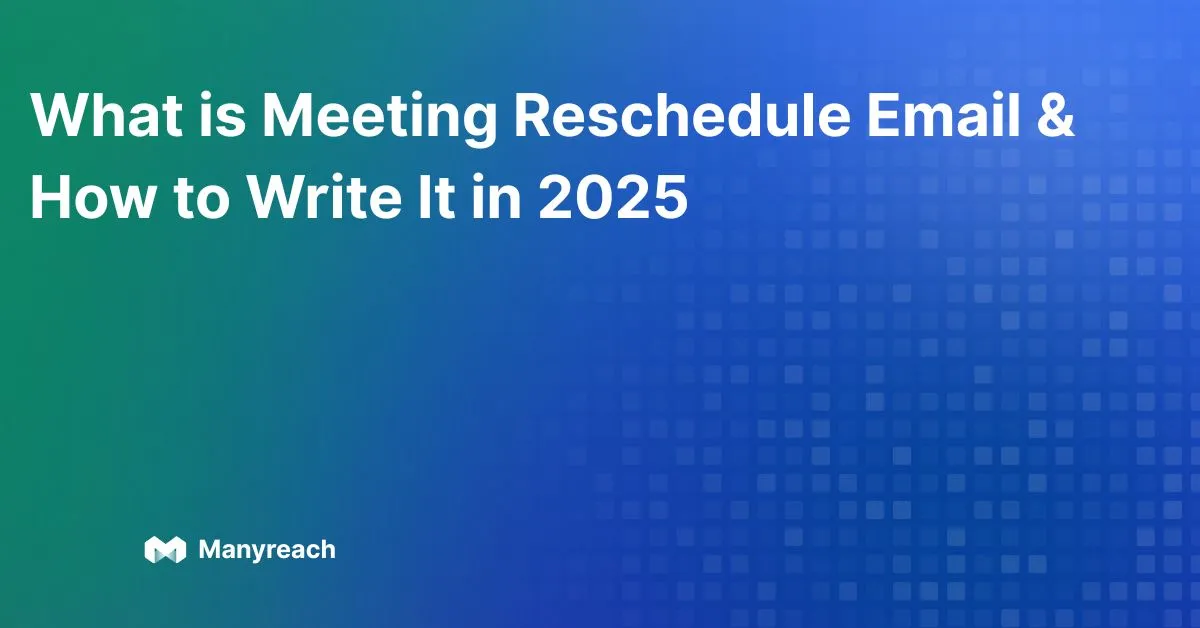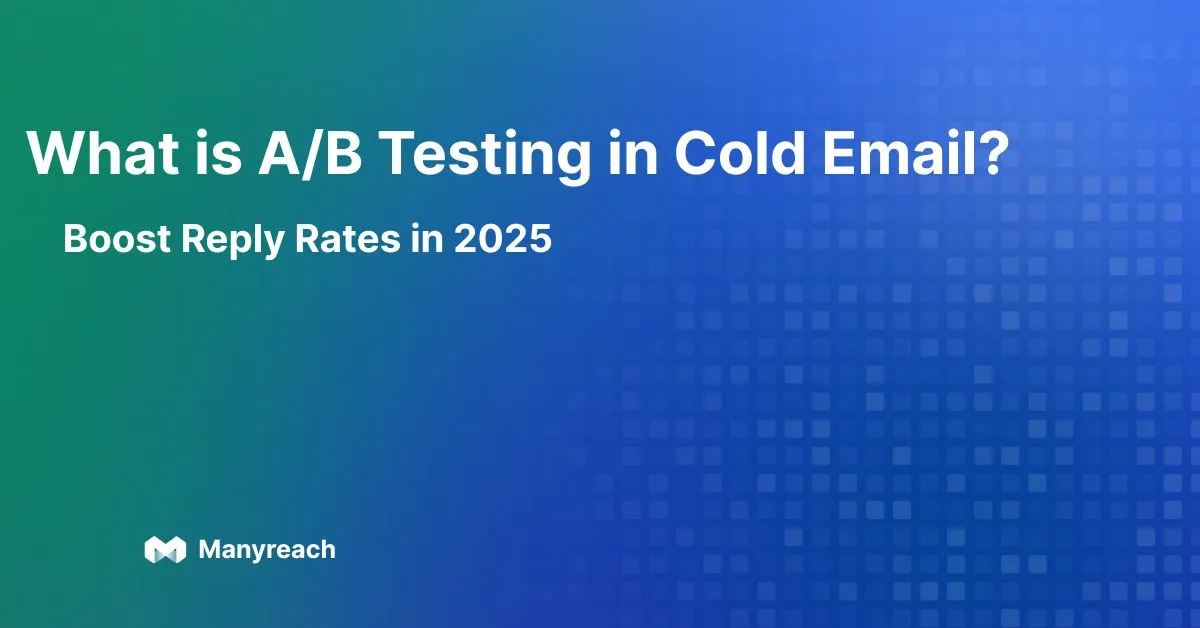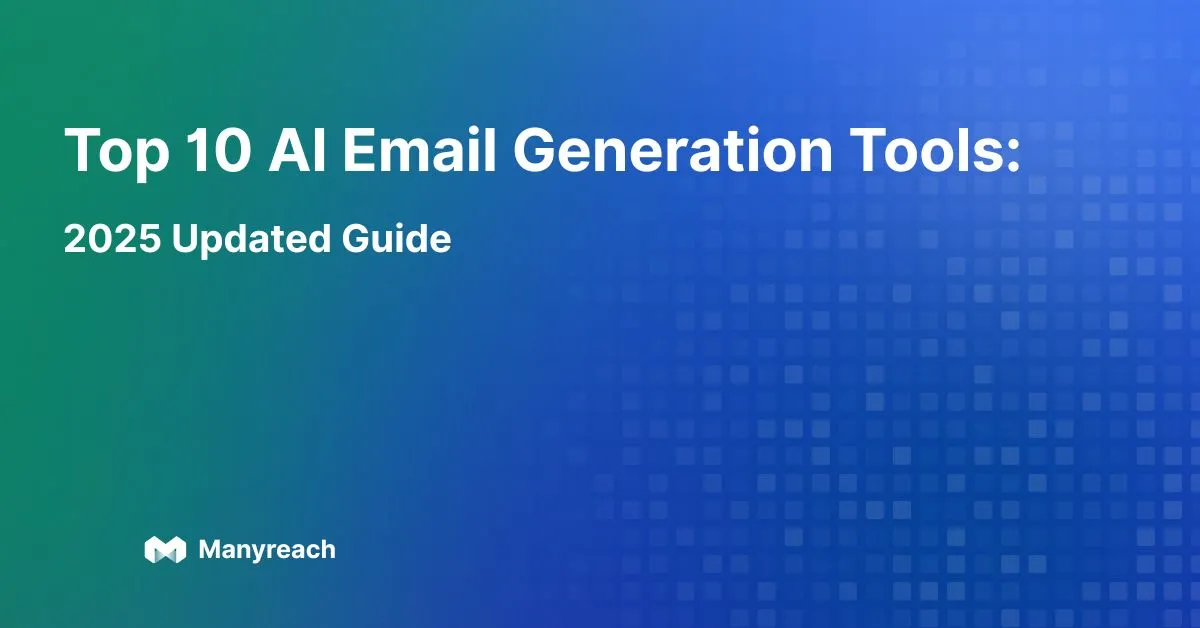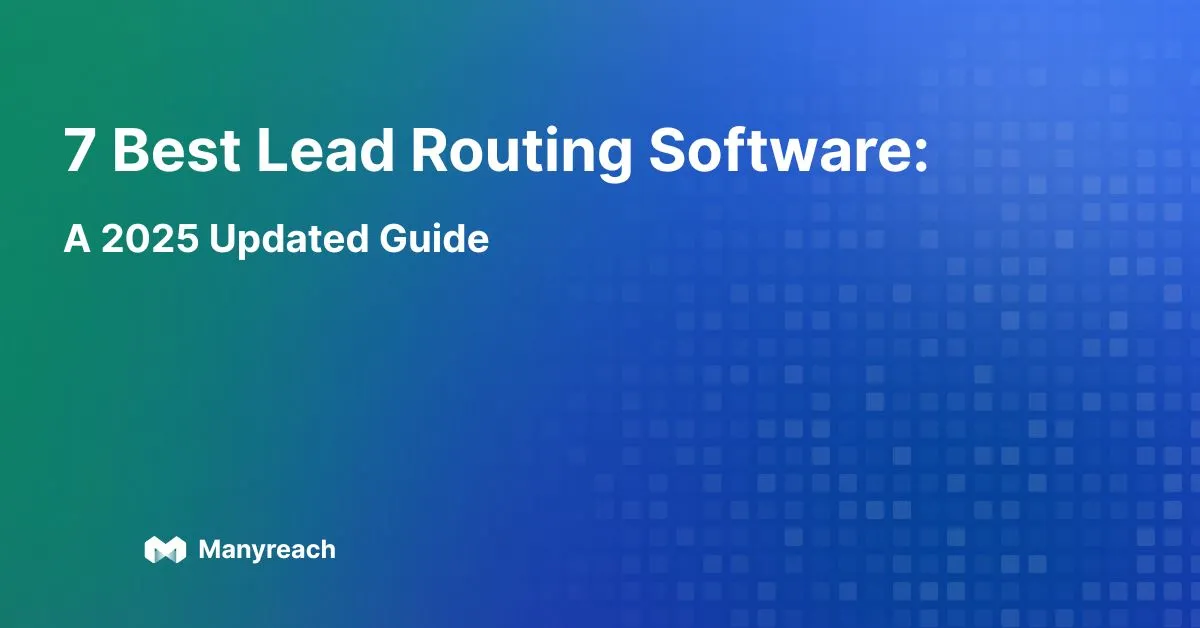How Many Cold Emails Does it Take to Get a Client?

A single number cannot guarantee success when you’re sending cold emails. But, on an average, it can take 50 to 100 contacts and 3 to 7 follow-ups to land one client.
Some marketers have claimed that it takes hundreds of emails, while others claim, it took them less than 20 to win a deal. So the answer depends on how you personalize your email, your offer, and how well your email stands out.
You have to focus on quality outreach and build trust, rather than just wondering how many cold emails it takes to get a client.
How Many Cold Emails to Get a Client?
There is no said number on how it takes to get a client through cold emails. So, it usually takes more than you think.
Here are a few data points I’ve collected from a survey:
- Businesses who plan their outreach campaigns have reported 8.5% positive response from their prospects.
- But, Reddit users often claim that it takes hundreds of cold emails before they start to see steady results.
So, what we can understand from this is, cold email is not about shooting arrows in the dark. It’s more about consistency, testing, and improving your outreach over the time.

Cold Email Outreach Meaning
A cold outreach is a set of thoughtful, well-planned, and targeted emails that offer value to those who may benefit from your services. But, it is often confused with spam emails, which are bulk and irrelevant, sent without any context.
So, cold email outreach is more about starting a conversation and building relationships; not forcing a sale. Its goal is to understand prospects, address their pain points, and show how your service could help them.
How to Get a Client Through Cold Email?
By now you have understood that the quality of a cold email is more important than the quantity. So, now the question arrives— how to write a quality cold email?
Here are the steps of writing a cold email that will help you to retain clients:
1. Create a List of Prospects
Your services cannot cater to everyone. For example, if you sell boxes, you can’t target businesses who sell email verification tools; you have to target retail businesses.
So, the first thing you have to do is create a list of prospects you can cater to.
Here are a few things you must keep in mind, while creating this list:
- Industry
- Company size
- Their budget range
- Pain points you can solve
- Decision-makers you need to contact
To create this list, you can research manually through LinkedIn, or the company websites. But you can also take help of prospecting tools like Lusha for faster results.
2. Write a cold email subject line
People send over hundreds millions of cold emails every year, so the competition is extremely high. In such a scenario, your subject lines are your gatekeepers. It will help you draw your prospects’ attention and get them to reply.
A good subject line will always be:
- Short and clear
- Personalized
- Always highlight pain points
Here are some good examples of subject line that you can use while writing your email:
- “{Name}, noticed your blog traffic could grow”
- “Quick tip for boosting {Company}’s lead generation”
- “Idea to save {Company} time on {specific task}”
- “{Name}, a strategy to improve your SEO in 30 days”
- “Can I help {Company} reduce ad spend waste?”
- “{Name}, let’s fix {Company}’s high bounce rate”
Your aim should be to spark curiosity among your target audience so they open your email. So, write something like these examples, or you can also use and modify them according to your needs.
3. Write a Strong Opener for Your Email
The next step is to write a strong email opener, to hook them to the email. So, your first line will decide whether or not they keep reading.
Avoid writing generic openers like “Hope this email finds you well” at any cost. Instead, refer to something specific like:
“I saw that your blogposts haven’t been updated properly in the last few months. That’s a missed opportunity to drive traffic and leads.”
Such a line will show that you’ve done your research and written the email specifically for them.
So, research and personalization are your secret weapons to draw your prospect’s attention.
4. Add Your Pitch
Now that you have their full attention, it’s time to add your pitch and explain what you do. But remember, you cannot write an essay here, you have to keep it short and benefits-driven:
“I help B2B SaaS companies to publish 7 blogs a month to help them bring in new traffic and leads. I’d love to do the same for you.”
Don’t use jargon, flowery language, or any lengthy discussions. Your aim is to start a conversation and not close the entire deal in one email. So, you can leave details for later, and just focus on key points for now.
5. Add Social Proof
See, if you’re claiming something, you need to back it up. So, after explaining what you do, you can add a line from your recent case study to prove what you’ve done in the past.
Here’s how you can add it in the email:
“I helped a CRM startup by growing their blog traffic by 280% in a year, adding $200k in their revenue.”
If you don’t have any recent case studies, you can also use testimonials, portfolio links, or your past results. But remember to keep it honest and specific to what your prospect does.
6. Write a Strong Call to Action
Now it’s time to close your email, so end it with a clear direction on what your recipient should do next. Your job is to guide your prospects on what to do next, and not make them guess.
Here are some ways on how you can guide your prospect:
- Would you like to book a quick 15 minute call for this or next week?”
- “Do you want to read more about the case I just mentioned?”
- “Can I send over a sample plan?”
Give your prospect the opportunity to decide, don’t try to force them into a deal; it will help you to create a long-lasting relationship. So, keep it simple and flexible!
7. Add an Email Signature
A well-crafted email will only be complete with a proper signature, as it confirms your identity and where your prospects can reach out to you.
So, here’s how you can add an email signature:
Luka Pecavar
SEO Writer | B2B Content Specialist
manyreach.com | Linkedin | Portfolio
That’s it! This will help you to pave the way for your prospects to reach out to you for further discussions.
8. Write follow-up emails
Don’t get tense if your prospect doesn’t reply to your first email; most people don’t reply to the first email. On average, you have to send 3-7 follow-up emails to draw your prospect’s attention.
If you’re sending cold emails at scale, you can use tools like Manyreach to automate your follow-ups and avoid losing tracks.
9. Track your Cold Email Campaign Results
Finally, once your campaign starts, you can use the reports and analytics feature of your cold email tool to track the results.
Here are the best ways to find out how your cold emails are performing:
- The percentage of reply rate— 8.5% is common
- Percentage of bounce rate — less than 7.5% means campaign is doing good
- The impact of your follow-up— how many people are replying after receiving a follow-up email.
If these three things are within the percentage bracket mentioned above, your campaign is doing good.
Cold Email Statistics That are Worth Knowing
As a marketer, knowing the common cold email statistics will help you to analyze your campaigns better. So, here are useful numbers that you can keep in mind:
- The open rate of your cold email should stand at 40%.
- The average open rate of your each campaign should be at 8.5%.
- A good cold email conversion rate should be at 0.2153%.
- You would need at least 3 to 7 follow-ups to draw your prospects’ attention.
- The best days to send your emails are on Mondays and Tuesdays.
These numbers are the proof that consistency will help you to beat luck, when it comes to cold email outreach.
Common mistakes that kill cold emails
It is human to err; but not if you want your cold emails to work. So, you must avoid some mistakes, if you want your cold outreach to work.
Below I have mentioned the mistakes so that you can avoid poor results:
1. Avoid Generic Templates
Don’t use generic templates, without personalizing them. Sure, you can use templates available online. But, remember to add specific details before sending them out.
2. Don’t Write Long Emails
Your emails are not essays. So, while you have to add important details, you can’t write paragraphs. Point out the key information you want to pass on and send them over.
3. Don’t Quit After 2 Emails
After the 1st follow-up, if the prospect doesn’t reply, you might think they're not interested. But that’s not true, you have to keep on following-up at least 6 more times to finally get a reply from them. Remember, success comes from persistence.
4. Don’t Ignore Deliverability
If you send too many emails in a day, your prospects’ ESP might flag your domain. So, set a daily sending limit to them. And always remember to warm up your emails before starting your campaign.
Fixing these will double or triple your response rate.
FAQs on Cold Email Outreach
1. How many cold emails per day to get a job?
You can aim for 20 to 40 high-quality, personalized emails. Don’t send too many generic emails, as it can affect your chances of getting a reply.
2. How many cold emails to get one client?
On an average it can take you 50-100 emails with 3 to 7 follow-ups to get a client. But some industries may need fewer, while others need more; there’s no said number.
4. Is cold emailing a good way to get clients?
Yes, if you do it with personalization and persistence, cold email’s a great way to get clients. Remember, spam won’t work, but targeted outreach can help you to win high-value clients.
5. How many follow-ups do you need?
You will usually need 3–7 follow-ups to get a reply. Most replies will come to you after the second or third email.
6. How long should a cold email be?
The perfect cold email should be 100-150 words, anything beyond that will seem redundant. So, keep it short, clear, and value-focused.
Keep it under 150 words. Short, clear, and value-focused.
7. How many cold emails to get a response?
You can expect about a 8.5% reply rate if you send a well-crafted email.
8. How many cold emails to get a client according to Reddit users?
Reddit threads often suggest that it took people to send hundreds to thousands of cold emails, depending on niche and quality of their jobs.
9. What is the 12-second rule for emails?
The 12-second rule is that you have about 12 seconds before readers lose interest. So keep your emails short and scannable.
Conclusion: How many cold emails to get a client?
The truth is there’s no magic number to decide how many cold emails will help you to get a client. On an average, it takes 50 to 100 emails and multiple follow-ups to land one client, but results vary by the industry and your approach.
The key is to personalize your emails, test them, and stay consistent. Instead of worrying about volume, focus on sending targeted, valuable emails that open doors to real conversations. That’s how cold emailing turns from numbers into actual paying clients.

.webp)








